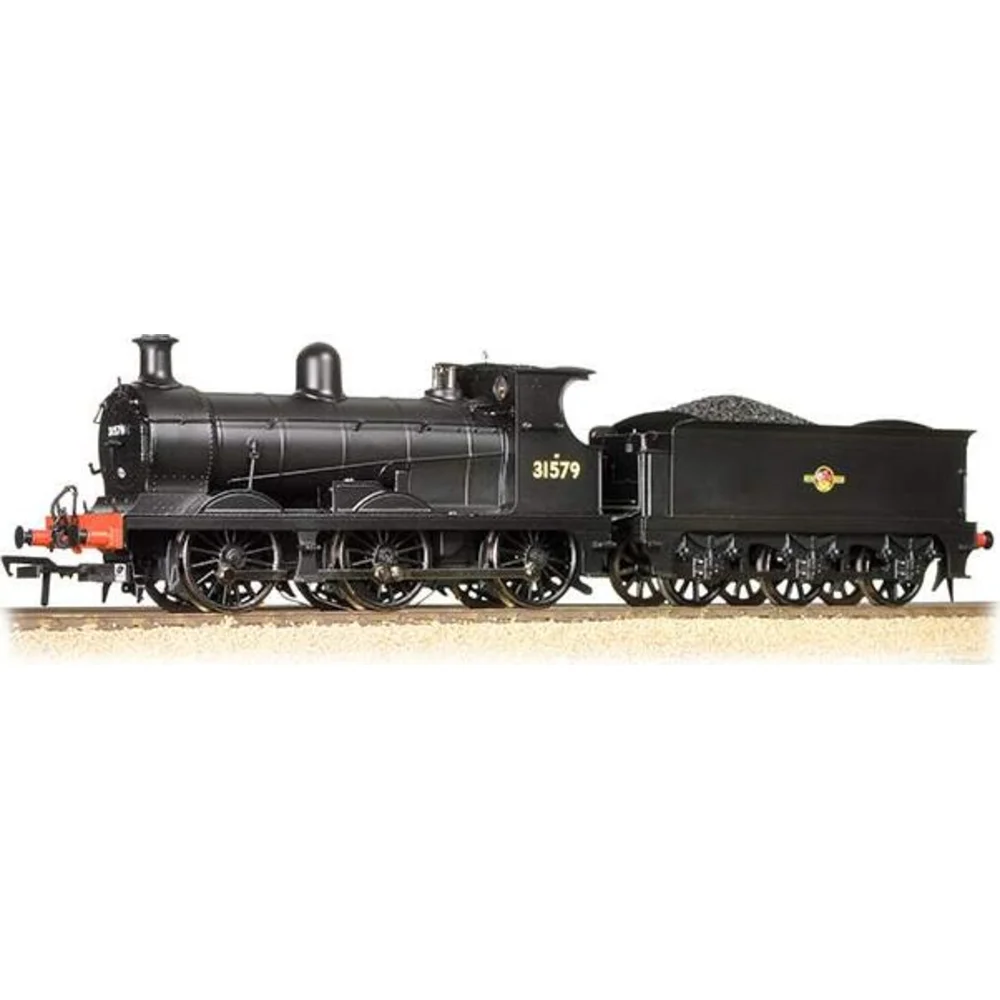Bachmann 31-465
South Eastern & Chatham Railway C 31579 British Railways Black with Late Crest
Tooling
Announced in 2011 and released from 2012 onwards, Bachmann’s OO gauge model of the South Eastern & Chatham Railway (SECR) C Class represented a significant addition to pre-grouping steam locomotive models. The prototype, designed by Harry Wainwright and built between 1900–1908, was a robust 0-6-0 tender engine primarily for freight but also used on passenger duties. The tooling aimed to capture the elegance of Wainwright’s design and cater to enthusiasts of Southern and early British Railways eras.
Tooling Features
- Scale: OO gauge (1:76)
- Construction: High-quality plastic body with fine separately fitted details and metal components for durability
- Detailing: Fully detailed cab interior including backhead; sprung buffers; hinged tender fall-plate; adjustable tender draw-bar; accurate chimney variations; brake rigging supplied for user fitting
- Couplings: Standard tension-lock couplers with NEM pockets
Mechanical & Electrical
- Motor: Smooth-running motor housed in the boiler
- Drive: All-wheel drive with tender pickups for reliable current collection
- Minimum Radius: Second radius (438 mm) recommended
- Weighting: Balanced for good traction; tender includes cast coal load
- Lighting: No factory-fitted directional or cab lighting
- Pickups: Located on locomotive and tender for consistent performance
DCC Capability
- DCC Ready with 21-pin socket
- No sound fitted as standard, but space provided for aftermarket sound installation
Liveries Produced
- SECR Lined Green (as preserved No. 592)
- Southern Railway Black (post-1940)
- BR Black with Early Emblem
- Later runs included SR black with green lining and weathered finishes
Reviews & Commentary
The model received praise for its accurate proportions, crisp livery application, and fine detail such as rivets, lamp irons, and cab fittings. Reviewers noted the SECR green version’s intricate lining and the correct tall chimney tooling. Performance was described as smooth and quiet, with good haulage for its size. Minor criticisms included fiddly brake rigging and limitations in printing on small components.
Media & Social Media
The C Class generated strong interest among enthusiasts, with positive coverage on platforms like Sam’s Trains and Jennifer E. Kirk’s YouTube channel. Videos highlighted the model’s aesthetic appeal and reliable running qualities, reinforcing its popularity among collectors of pre-grouping and Southern Region stock.
Interesting Notes
The tooling was part of Bachmann’s strategy to expand pre-grouping offerings, and its success demonstrated demand for historically significant locomotives. The preserved prototype, No. 592, remains a popular subject and influenced the choice of liveries for the initial batch.
Class & Prototype
- Class: South Eastern & Chatham Railway C
- Traction: Steam
- Built: 1900-1908
- Total Built: 109
No prototype found.
Operator & Livery
- Operator: British Railways
- Livery: Black with Late Crest
British Railways transformed Britain's fragmented rail network into a unified national system following nationalisation on 1st January 1948. Created from the "Big Four" companies under the Transport Act 1947, BR operated most of Great Britain's railways until rebranding as British Rail in 1965, managing over 20,000 route miles and inheriting nearly 20,000 locomotives of diverse designs.
The organisation pioneered standardisation through its revolutionary BR Standard locomotive programme (1951-1960), producing 999 advanced steam engines under Robert Riddles' direction. These included the versatile Britannia Pacifics, mighty 9F freight engines, and mixed-traffic classes that incorporated the best features from all predecessor companies. The 1955 Modernisation Plan accelerated diesel and electric traction development, creating fascinating mixed-traction operations.
Notable achievements included establishing unified locomotive classification systems, introducing distinctive corporate liveries, and managing the complex transition from steam to modern traction. BR's six regional structure preserved operational diversity whilst enabling standardisation of practices, signalling, and rolling stock that had eluded private enterprise for over a century.
The BR era represents steam traction's final flowering alongside emerging diesel technology, creating unparalleled locomotive variety. Today, this heritage remains highly popular with railway enthusiasts through extensive preserved fleets, heritage railway operations, and comprehensive model ranges from manufacturers like Hornby, Bachmann, and Dapol, making BR subjects essential for authentic post-war British railway modelling across all scales.
British Railways' plain black livery remained the standard finish for freight and shunting locomotives from 1956 onwards, representing the most economical and practical scheme for inherently dirty industrial operations. Plain black locomotives retained red buffer beams and received white lettering in Gill Sans style, maintaining the utilitarian approach established in the early BR period. The livery was applied to a vast range of locomotive types, from powerful freight engines like the 9F class down to humble shunting locomotives and industrial engines working in goods yards, collieries, and freight terminals.
From 1956, these locomotives received the new "Lion and Crown" emblem (nicknamed the "Ferret and Dartboard"), a proper heraldic device featuring a rampant lion emerging from a crown and holding a spoked wheel, enclosed in a roundel with "British Railways" displayed on bars either side. Unlike earlier practice, the new emblem was positioned centrally on tender sides or tank sides without reference to axle boxes, following heraldic conventions with the lion facing left. This livery period coincided with increasing neglect as steam operations wound down, with locomotives often covered in layers of grime that obscured the paintwork and made the already austere black finish appear even more weathered. The plain black finish continued until individual locomotives were withdrawn from service, with many examples lasting into the final years of steam operation in 1968. For modellers, this livery represents the twilight of steam freight operations, capturing the workaday reality of British Railways' industrial locomotive fleet during the final phase of steam traction.
